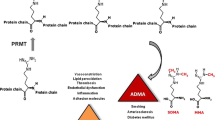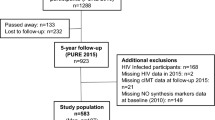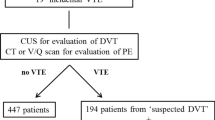Abstract
Asymmetric dimethylarginine (ADMA) and l-homoarginine (hArg) are l-arginine (Arg) metabolites derived from different pathways. Protein arginine N-methyltransferase (PRMT) and subsequent proteolysis of proteins containing methylarginine residues release ADMA. Arginine:glycine amidinotransferase (AGAT) converts Arg to hArg and guanidinoacetate (GAA). While high concentrations of ADMA and low concentrations of hArg in the blood have been established as cardiovascular risk markers, the cardiovascular relevance of GAA is still unexplored. Arg and hArg are substrates and ADMA is an inhibitor of nitric oxide (NO) synthase (NOS). The cardiovascular effects of ADMA and hArg have been related to NO, a potent endogenous vasodilator. ADMA and hArg are considered to exert additional, not yet explored, presumably NO-unrelated effects and to act antagonistically in the renal and cardiovascular systems. Although the physiological role of Arg, ADMA, hArg and NO for endothelial function in small- and medium-sized arteries has been intensively studied in the past, the clinical relevance of aortic wall remodeling still remains unclear. Here, we evaluated potential relation between aortic distensibility (AD) or aortic intima-media thickness (aIMT) and circulating ADMA, hArg, GAA, and the NO metabolites nitrite and nitrate in the plasma of 78 patients (24 females, 54 males; aged 59 ± 14 years) with recent ischemic stroke or transient ischemic attack (TIA). All biochemical parameters were determined by stable-isotope dilution gas chromatography–mass spectrometry. AD and aIMT were measured by transesophageal echocardiography. Arg, hArg, ADMA and GAA median plasma concentrations (µM) were determined to be 61, 1.43, 0.50 and 2.16, respectively. hArg, ADMA and GAA correlated closely with Arg. Nitrite, nitrate and creatinine median plasma concentrations (µM) were 2.49, 48.7, and 84.1, respectively. Neither AD (2.61 vs. 1.85 10−6 × cm2 × dyn−1, P = 0.064) nor aIMT (1.25 vs. 1.13 mm, P = 0.596) differed between females and males. The hArg/ADMA molar ratio (r = −0.351, P = 0.009), nitrate (r = 0.364, P = 0.007) and nitrite (r = 0.329, P = 0.015) correlated with aIMT but not with AD. Arg, hArg, ADMA and GAA correlated with aIMT but not with AD. The results demonstrate a strong relation between the Arg/NO pathway and aortic atherosclerosis but not with AD suggesting different mechanisms underlying the two aspects of aortic wall remodeling.




Similar content being viewed by others
Abbreviations
- AD:
-
Aortic distensibility
- ADMA:
-
Asymmetric dimethylarginine
- AGAT:
-
Arginine:glycine amidinotransferase
- CVD:
-
Cerebrovascular disease
- GAA:
-
Guanidinoacetate
- GAMT:
-
Guanidinoacetate N-methyltransferase
- GC–MS:
-
Gas chromatography–mass spectrometry
- hArg:
-
Homoarginine
- IGF-1:
-
Insulin-like growth factor 1
- IMT:
-
Intima-media thickness
- aIMT:
-
Aortic intima-media thickness
- INR:
-
International normalized ratio
- NO:
-
Nitric oxide
- NOS:
-
Nitric oxide synthase
- QC:
-
Quality control
- TIA:
-
Transient ischemic attack
- TOE:
-
Transesophageal echocardiography
References
Alesutan I, Feger M, Tuffaha R, Castor T, Musculus K, Buehling SS, Heine CL, Kuro-O M, Pieske B, Schmidt K, Tomaschitz A, Maerz W, Pilz S, Meinitzer A, Voelkl J, Lang F (2016) Augmentation of phosphate-induced osteo-/chondrogenic transformation of vascular smooth muscle cells by homoarginine. Cardiovasc Res 110:408–418
Atzler D, Schwedhelm E, Nauck M, Ittermann T, Böger RH, Friedrich N (2014) Serum reference intervals of homoarginine, ADMA, and SDMA in the study of health in Pomerania. Clin Chem Lab Med 52:1835–1842
Atzler D, Appelbaum S, Cordts K, Ojeda FM, Wild PS, Münzel T, Blankenberg S, Böger RH, Blettner M, Beutel ME, Pfeiffer N, Zeller T, Lackner KJ, Schwedhelm E (2016a) Reference intervals of plasma homoarginine from the German Gutenberg Health Study. Clin Chem Lab Med 54:1231–1237
Atzler D, Schönhoff M, Cordts K, Ortland I, Hoppe J, Hummel FC, Gerloff C, Jaehde U, Jagodzinski A, Böger RH, Choe CU, Schwedhelm E (2016b) Oral supplementation with l-homoarginine in young volunteers. Br J Clin Pharmacol 82:1477–1485
Bai Y, Sun L, Du L, Zhang T, Xin W, Lan X, Du G (2013) Association of circulating levels of asymmetric dimethylarginine (ADMA) with carotid intima-media thickness: evidence from 6168 participants. Ageing Res Rev 12:699–707
Benetos A, Waeber B, Izzo J, Mitchell G, Resnick L, Asmar R, Safar M (2002) Influence of age, risk factors, and cardiovascular and renal disease on arterial stiffness: clinical applications. Am J Hypertens 15:1101–1108
Bernstein HG, Jäger K, Dobrowolny H, Steiner J, Keilhoff G, Bogerts B, Laube G (2015) Possible sources and functions of l-homoarginine in the brain: review of the literature and own findings. Amino Acids 47:1729–1740
Carmann C, Lilienthal E, Weigt-Usinger K, Schmidt-Choudhury A, Hörster I, Kayacelebi AA, Beckmann B, Chobanyan-Jürgens K, Tsikas D, Lücke T (2015) The l-arginine/NO pathway, homoarginine, and nitrite-dependent renal carbonic anhydrase activity in young people with type 1 diabetes mellitus. Amino Acids 47:1865–1874
Choe CU, Atzler D, Wild PS, Carter AM, Böger RH, Ojeda F, Simova O, Stockebrand M, Lackner K, Nabuurs C, Marescau B, Streichert T, Müller C, Lüneburg N, De Deyn PP, Benndorf RA, Baldus S, Gerloff C, Blankenberg S, Heerschap A, Grant PJ, Magnus T, Zeller T, Isbrandt D, Schwedhelm E (2013) Homoarginine levels are regulated by l-arginine:glycine amidinotransferase and affect stroke outcome: results from human and murine studies. Circulation 128:1451–1461
Davids M, Ndika JD, Salomons GS, Blom HJ, Teerlink T (2012) Promiscuous activity of arginine:glycine amidinotransferase is responsible for the synthesis of the novel cardiovascular risk factor homoarginine. FEBS Lett 586:3653–3657
Derave W, Marescau B, Vanden Eede E, Eijnde BO, De Deyn PP, Hespel P (2004) Plasma guanidino compounds are altered by oral creatine supplementation in healthy humans. J Appl Physiol (1985) 97:852–857
Ferrari E, Vidal R, Chevallier T, Baudouy M (1999) Atherosclerosis of the thoracic aorta and aortic debris as a marker of poor prognosis: benefit of oral anticoagulants. J Am Coll Cardiol 33:1317–1322
Frenay AS, van den Berg E, de Borst MH, Beckmann B, Tsikas D, Feelisch M, Navis G, Bakker SJL, van Goor H (2015a) Plasma ADMA associates with all-cause mortality in renal transplant recipients. Amino Acids 47:1941–1949
Frenay AS, Kayacelebi AA, van den Berg E, de Borst MH, Beckmann B, van Goor H, Bakker SJL, Tsikas D (2015b) High urinary homoarginine excretion is associated with low rates of all-cause mortality and graft failure in renal transplant recipients. Amino Acids 47:1827–1836
Haghikia A, Kayacelebi AA, Beckmann B, Hanff E, Gold R, Haghikia A, Tsikas D (2015) Serum and cerebrospinal fluid concentrations of homoarginine, arginine, asymmetric and symmetric dimethylarginine, nitrite and nitrate in patients with multiple sclerosis and neuromyelitis optica. Amino Acids 47:1837–1845
Hanff E, Kayacelebi AA, Yanchev GR, Maassen N, Haghikia A, Tsikas D (2016a) Simultaneous stable-isotope dilution GC-MS measurement of homoarginine, guanidinoacetate and their common precursor arginine in plasma and their interrelationships in healthy and diseased humans. Amino Acids 48:721–732
Hanff E, Lützow M, Kayacelebi AA, Finkel A, Maassen M, Yanchev GR, Haghikia A, Bavendiek U, Buck A, Lücke T, Maassen N, Tsikas D (2016b) Simultaneous GC-ECNICI-MS measurement of nitrite, nitrate and creatinine in human urine and plasma in clinical setting. J Chromatogr B. doi:10.1016/j.jchromb.2016.03.034
Hecker M, Walsh DT, Vane JR (1991) On the substrate specificity of nitric oxide synthase. FEBS Lett 294:221–224
Hopkins KD, Lehmann ED, Gosling RG, Parker JR, Sönksen PH (1993) Biochemical correlates of aortic distensibility in vivo in normal subjects. Clin Sci (Lond) 84:593–597
Hörster I, Weigt-Usinger K, Carmann C, Chobanyan-Jürgens K, Köhler C, Schara U, Kayacelebi AA, Beckmann B, Tsikas D, Lücke T (2015) The l-arginine/NO pathway and homoarginine are altered in Duchenne muscular dystrophy and improved by glucocorticoids. Amino Acids 47:1853–1863
Jaźwińska-Kozuba A, Martens-Lobenhoffer J, Kruszelnicka O, Rycaj J, Chyrchel B, Surdacki A, Bode-Böger SM (2013) Opposite associations of plasma homoarginine and ornithine with arginine in healthy children and adolescents. Int J Mol Sci 14:21819–21832
Kayacelebi AA, Nguyen TH, Neil C, Horowitz JD, Jordan J, Tsikas D (2014) Homoarginine and 3-nitrotyrosine in patients with takotsubo cardiomyopathy. Int J Cradiol 173:546–547
Kayacelebi AA, Knöfel AK, Beckmann B, Hanff E, Warnecke G, Tsikas D (2015a) Measurement of unlabeled and stable isotope-labeled homoarginine, arginine and their metabolites in biological samples by GC–MS and GC–MS/MS. Amino Acids 47:2023–2034
Kayacelebi AA, Langen J, Weigt-Usinger K, Chobanyan-Jürgens K, Mariotti F, Schneider JY, Rothmann S, Frölich JC, Atzler D, Choe CU, Schwedhelm E, Huneau JF, Lücke T, Tsikas D (2015b) Biosynthesis of homoarginine (hArg) and asymmetric dimethylarginine (ADMA) from acutely and chronically administered free l-arginine in humans. Amino Acids 47:1893–1908
Kayacelebi AA, Willers J, Pham VV, Hahn A, Schneider JY, Rothmann S, Frölich JC, Tsikas D (2015c) Plasma homoarginine, arginine, asymmetric dimethylarginine and total homocysteine interrelationships in rheumatoid arthritis, coronary artery disease and peripheral artery occlusion disease. Amino Acids 47:1885–1891
Khalil A, Hardman L, O´Brien P (2015) The role of arginine, homoarginine and nitric oxide in pregnancy. Amino Acids 47:1715–1727
Kielstein A, Tsikas D, Galloway GP, Mendelson JE (2007) Asymmetric dimethylarginine (ADMA)—a modulator of nociception in opiate tolerance and addiction. Nitric Oxide 17:55–59
Kronzon I, Tunick PA (1996) Transesophageal echocardiography in thoracic aortic atherosclerosis. Echocardiography 13:233–246
Kronzon I, Tunick PA (2006) Aortic atherosclerotic disease and stroke. Circulation 114:63–75
Langen J, Kayacelebi AA, Beckmann B, Weigt-Usinger K, Carmann C, Hörster I, Lilienthal E, Richter-Unruh A, Tsikas D, Lücke T (2015) Homoarginine (hArg) and asymmetric dimethylarginine (ADMA) in short stature children without and with growth hormone deficiency: hArg and ADMA are involved differently in growth in the childhood. Amino Acids 47:1875–1883
Lehmann ED, Hopkins KD, Jones RL, Rudd AG, Gosling RG (1995) Aortic distensibility in patients with cerebrovascular disease. Clin Sci (Lond) 89:247–253
Lehmann ED, Hopkins KD, Rawesh A, Joseph RC, Kongola K, Coppack SW, Gosling RG (1998) Relation between number of cardiovascular risk factors/events and noninvasive Doppler ultrasound assessments of aortic compliance. Hypertension 32:565–569
Leiper J, Vallance P (1999) Biological significance of endogenous methylarginines that inhibit nitric oxide synthases. Cardiovasc Res 43:542–548
Lew J, Sanghavi M, Ayers CR, McGuire DK, Omland T, Atzler D, Gore MO, Neeland I, Berry JD, Khera A, Rohatgi A, de Lemos JA (2017) Sex-based differences in cardiometabolic biomarkers. Circulation 135:544–555
März W, Meinitzer A, Drechsler C, Pilz S, Krane V, Kleber ME, Fischer J, Winkelmann BR, Böhm BO, Ritz E, Wanner C (2010) Homoarginine, cardiovascular risk, and mortality. Circulation 122:967–975
Moali C, Boucher JL, Sari MA, Stuehr DJ, Mansuy D (1998) Substrate specificity of NO synthases: detailed comparison of l-arginine, homo-l-arginine, their N omega-hydroxy derivatives, and N omega-hydroxynor-l-arginine. Biochemistry 37:10453–10460
Moncada S, Higgs A (1993) The l-arginine-nitric oxide pathway. New Engl J Med 329:2002–2012
Papageorgiou N, Androulakis E, Papaioannou S, Antoniades C, Tousoulis D (2015) Homoarginine in the shadow of asymmetric dimethylarginine: from nitric oxide to cardiovascular disease. Amino Acids 47:1741–1750
Pilz S, Meinitzer A, Tomaschitz A, Drechsler C, Ritz E, Krane V, Wanner C, Böhm BO, März W (2011a) Low homoarginine concentration is a novel risk factor for heart disease. Heart 97:1222–1227
Pilz S, Tomaschitz A, Meinitzer A, Drechsler C, Ritz E, Krane V, Wanner C, Böhm BO, März W (2011b) Low serum homoarginine is a novel risk factor for fatal strokes in patients undergoing coronary angiography. Stroke 42:1132–1134
Pilz S, Teerlink T, Scheffer PG, Meinitzer A, Rutters F, Tomaschitz A, Drechsler C, Kienreich K, Nijpels G, Stehouwer CD, März W, Dekker JM (2014a) Homoarginine and mortality in an older population: the Hoorn study. Eur J Clin Invest 44:200–208
Pilz S, Edelmann F, Meinitzer A, Gelbrich G, Döner U, Düngen HD, Tomaschitz A, Kienrreich K, Gaksch M, Duvinage A, Stahrenberg R, Kunde J, Schmidt A, März W, Wachter R, Pieske B (2014b) Associations of methylarginines and homoarginine with diastolic dysfunction and cardiovascular risk factors in patients with preserved left ventricular ejection fraction. J Card Fail 20:923–930
Pilz S, Putz-Bankuti C, Meinitzer A, März W, Kienreich K, Stojakovic T, Pieber TR, Stauber RE (2015a) Association of homoarginine and methylarginines with liver dysfunction and mortality in chronic liver disease. Amino Acids 47:1817–1826
Pilz S, Meinitzer A, Gaksch M, Grübler M, Verheyen N, Drechsler C, Hartaigh BÓ, Lang F, Alesutan I, Voelkl J, März W, Tomaschitz A (2015b) Homoarginine in the renal and cardiovascular systems. Amino Acids 47:1703–1713
Shiraga H, Watanabe Y, Mori A (1991) Guanidino compound levels in the serum of healthy adults and epileptic patients. Epilepsy 8:142–148
Smulyan H, Mookherjee S, Safar ME (2016) The two faces of hypertension: role of aortic stiffness. J Am Soc Hypertens 10:175–183
Stary HC, Blankenhorn DH, Chandler AB, Glagov S, Insull W Jr, Richardson M, Rosenfeld ME, Schaffer SA, Schwartz CJ, Wagner WD et al (1992) A definition of the intima of human arteries and of its atherosclerosis-prone regions. A report from the Committee on Vascular Lesions of the Council on Arteriosclerosis, American Heart Association. Circulation 85:391–40514
Stefanadis C, Stratos C, Boudoulas H, Kourouklis C, Toutouzas P (1990) Distensibility of the ascending aorta: comparison of invasive and non-invasive techniques in healthy men and in men with coronary artery disease. Eur Heart J 11:990–996
Stefanadis C, Tsiamis E, Vlachopoulos C, Stratos C, Toutouzas K, Pitsavos C, Marakas S, Boudoulas H, Toutouzas P (1997) Unfavorable effect of smoking on the elastic properties of the human aorta. Circulation 95:31–38
Taes YE, Marescau B, De Vriese A, De Deyn PP, Schepers E, Vanholder R, Delanghe JR (2008) Guanidino compounds after creatine supplementation in renal failure patients and their relation to inflammatory status. Nephrol Dial Transpl 23:1330–1335
Thum T, Tsikas D, Stein S, Schultheiss M, Eigenthaler M, Anker SD, Poole-Wilson PA, Ertl G, Bauersachs J (2005) Suppression of endothelial progenitor cells in human coronary artery disease by the endogenous nitric oxide synthase inhibitor asymmetric dimethylarginine. J Am Coll Cardiol 46:1693–1701
Tsikas D (2008) A critical review and discussion of analytical methods in the l-arginine/nitric oxide area of basic and clinical research. Anal Biochem 379:139–163
Tsikas D, Kayacelebi AA (2014) Do homoarginine and asymmetric dimethylarginine act antagonistically in the cardiovascular system? Circ J 78:2094–2095
Tsikas D, Wu G (2015) Homoarginine, arginine, and relatives: analysis, metabolism, transport, physiology, and pathology. Amino Acids 47:1697–1702
Tsikas D, Böger RH, Sandmann J, Bode-Böger SM, Frölich JC (2000) Endogenous nitric oxide synthase inhibitors are responsible for the l-arginine paradox. FEBS Lett 478:1–3
Tsikas D, Schubert B, Gutzki FM et al (2003) Quantitative determination of circulating and urinary asymmetric dimethylarginine (ADMA) in humans by gas chromatography-tandem mass spectrometry as methyl ester tri(N-pentafluoropropionyl) derivative. J Chromatogr B 798:87–99
Wu G (2013) Functional amino acids in nutrition and health. Amino Acids 45:407–411
Wu G, Bazer FW, Davis TA, Kim SW, Li P, Marc Rhoads J, Carey Satterfield M, Smith SB, Spencer TE, Yin Y (2009) Arginine metabolism and nutrition in growth, health and disease. Amino Acids 37:153–168
Acknowledgements
This work is part of the medical doctoral thesis of Georgi Radoslavov Yanchev, which was performed at the Centre of Pharmacology and Toxicology, Hannover Medical School, Hannover, Germany, under the supervision of Dimitrios Tsikas and Arash Haghikia. Arash Haghikia is supported by the “Junge Akademie” Program of the Hannover Medical School.
Author information
Authors and Affiliations
Corresponding author
Ethics declarations
Ethical statement
The study reported here was approved by the Ethics Committee of the Hannover Medical School. All participants gave their written informed consent.
Conflict of interest
The authors declare that they have no conflict of interest.
Additional information
A. Haghikia and G. R. Yanchev contributed equally to this work and are both first authors.
D. Tsikas and U. Bavendiek are both senior authors.
Rights and permissions
About this article
Cite this article
Haghikia, A., Yanchev, G.R., Kayacelebi, A.A. et al. The role of l-arginine/l-homoarginine/nitric oxide pathway for aortic distensibility and intima-media thickness in stroke patients. Amino Acids 49, 1111–1121 (2017). https://doi.org/10.1007/s00726-017-2409-2
Received:
Accepted:
Published:
Issue Date:
DOI: https://doi.org/10.1007/s00726-017-2409-2




